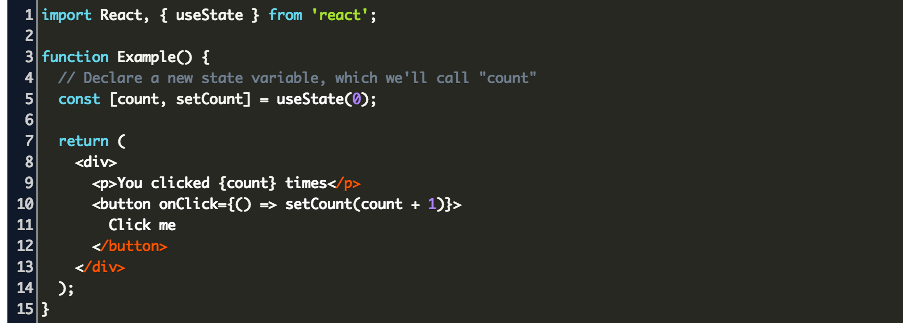

However, you might have noticed that when you try to optimize Hooks by specifying a dependency array, you can run into bugs with stale closures. In this post, we’ve looked at common broken pattern in classes, and how closures help us fix it. However, using a reducer is often a better solution. This pattern can also be handy for optimizations - such as when useCallback identity changes too often. Remember that you can track any value like this - a prop, a state variable, the whole props object, or even a function. However, it can be handy when dealing with imperative APIs like intervals and subscriptions. Capturing props or state is usually a better default.
REACT FUNCTIONAL COMPONENTS INSTALL
Then inside your app run: npm install reduxjs/toolkit react-redux. Using a ref like this isn’t necessary very often. This creates your React app to use the official template for working with Redux. This ensures our mutation doesn’t break features like Time Slicing and Suspense which rely on interruptible rendering. We do the assignment inside an effect so that the ref value only changes after the DOM has been updated. For questions about adopting functions more widely, refer to the Hooks FAQ.Ĭlass ProfilePage extends React.

I’m only describing the difference between these two programming models in React. Note: this post isn’t a value judgement of either classes or functions. It existed ever since function components were introduced in 2015 but it’s often overlooked:įunction components capture the rendered values. In this post, I will look at the biggest difference between them.

So where does that leave us? Are there any fundamental differences between React functions and classes at all? Of course, there are - in the mental model. Hooks are still new (like React was in 2014), and some “best practices” haven’t yet found their way into the tutorials. In either case we don’t recommend rewriting your existing components unless you have other reasons and don’t mind being an early adopter. We can create a functional component in React by writing a JavaScript. In our observation, the performance differences are negligible, though optimization strategies are a bit different. Functional Components Functional components are more often used while working in React.
REACT FUNCTIONAL COMPONENTS CODE
Performance primarily depends on what the code is doing rather than whether you chose a function or a class. Which one? Many of such benchmarks are flawed so I’d be careful drawing conclusions from them. Maybe you’ve heard one of them is better for performance. How do React function components differ from React classes?įor a while, the canonical answer has been that classes provide access to more features (like state).


 0 kommentar(er)
0 kommentar(er)
